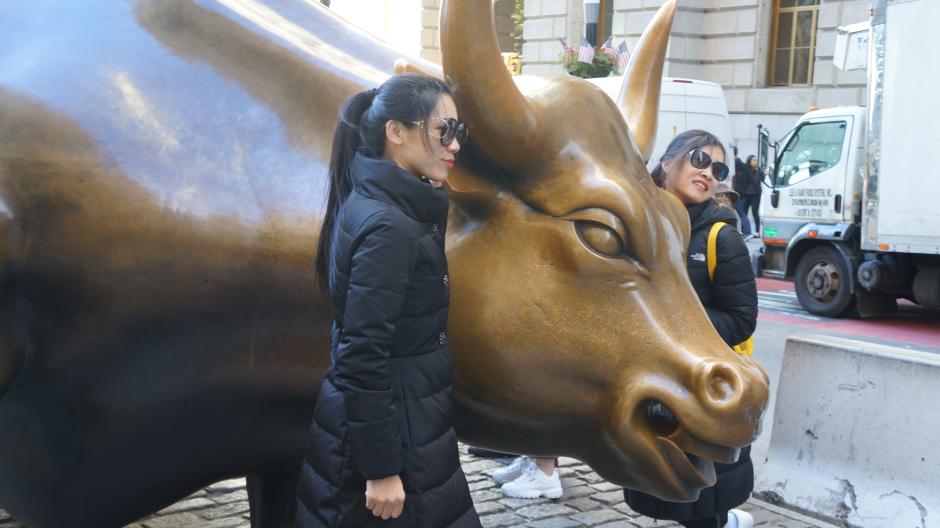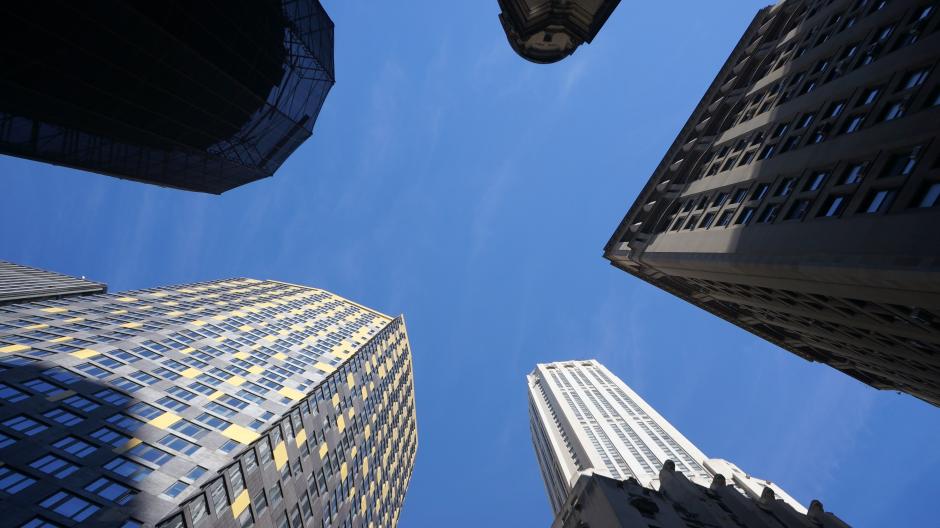When you travel to New York for the first time, you have expectations. They are not always fulfilled, but one discovers sides that one would not have expected to be there.
Perhaps one should just approach New York the way the first settlers did centuries ago. From the south, maybe even from the water, yes – but definitely from the south. Because connoisseurs say that anyone who has seen the Manhattan skyline “appear” in front of them will never forget this sight.
You understand this sentence as soon as the taxi approaches the southern tip of the island: There are a good 6,000 skyscrapers in New York, the majority of them are in Manhattan. You’ve heard it all, sure, but then this: all the years of looking forward to your first visit to the Big Apple, all the years of dying to finally see the Statue of Liberty, dissolve in seconds astonishment on. America’s symbol of freedom seems small, oh, tiny compared to all the skyscrapers. Welcome to the city of surprises.
–
This is probably how most immigrants approached New York – from the water. With the Statue of Liberty in view.
Photo: Nicole Prestle
Admittedly, spending three days there is brazen arrogance towards this mega-city. It would have to be weeks to get an approximate overview. But who has time for such an intensive acquaintance? Hence the entry-level variant: Big Apple for the cautious with Lower Manhattan as the starting point – the district where the history of New York began.
One person who can tell a lot about this is the German Volker Hanke. It’s a cool fall day and the 48-year-old is expecting his guests in Battery Park, the southernmost end of Manhattan. Seagulls are screaming in the background, a cool wind is blowing in from Upper Bay – shouldn’t the big city feel different? Hank smiles. Manhattan, he says, is just different. In many things. He should know: Years ago he lived here himself, then he moved over to Staten Island – because of the money: “Most of the other districts here are no longer affordable.”
$1800 for a one bedroom apartment
Not even Manhattan, the former immigrant district, whose population structure was very mixed until the mid-1980s. But first the poorer ones moved away, later the middle class. One reason is the rents in the oldest district of the city, which are now among the highest in the world. $1,800 for a one-bedroom apartment with a kitchenette is standard. Hardly anyone can afford that, which is why the face of Manhattan gradually changed. A good 1.6 million people live there, more than in München – but in 1910 there were twice as many. “First people lived here, then came industry, now almost all offices,” Hanke summarizes the development succinctly.
During the day Manhattan is busy: In the financial district, men in suits sprint through the streets with a coffee to go in one hand and their smartphone in the other. Business people crowd the mobile food stalls in front of the New York Stock Exchange at lunchtime, while at the back of the building tourists line up around the bronze Wall Street bull for the best souvenir photo. taxi horn; city guides trying to keep their groups together; Travelers maneuvering trolley cases between parked cars and rubbish bins. This is how you imagine New York. But if you stroll through the rows of houses in Manhattan late at night, you will feel the office city: the drugstore one block from the hotel is closed from 7 p.m. At the café a few doors down? Lowered shutters. Most windows: dark. The hustle and bustle that reigns a few blocks north in Times Square, the flashing lights, the 24-hour big-city hustle and bustle – you won’t find any of that in Lower Manhattan. Here the city, which is said to never sleep, comes to rest a little.

–
Hustle and bustle during the day, amazing calm after hours: on Wall Street.
Photo: Nicole Prestle
Manhattan, one of five New York City boroughs
Manhattan is one of New York’s five boroughs, but it’s the most well-known. Statue of Liberty, Broadway, Wall Street, the memorial of the terrorist attacks of September 2011 – almost all important sights are located here. But the past is at least as exciting as this present: “The city was settled from the south,” says Volker Hanke. Everything that defines the Big Apple began in Manhattan – on a September day in 1609 with an English navigator who had seriously lost his route.
Henry Hudson had sailed from Holland a few months earlier. The Dutch East India Company had commissioned him to find a northern passage to Asia to secure trade with the colonies. But Hudson had other ideas: He sailed west and reached New York Bay. He later described this place to the Dutch in powerful words: He had seen a river, “wide and deep, with good anchorages”. He had discovered a country that was “like no other” suitable for cultivation. He spoke of fur goods and oysters, which the locals had in abundance. No wonder that from that time until now millions of people have left to search for a better life in this New World.
Basically, Volker Hanke is one of them. When he came to the United States from Paderborn, it was supposed to be a temporary stay. His visa expired, Hanke left the country only to come back a short time later. This went on several times before he finally got his green card. As a city guide, he now brings German tourists closer to New York. being New York because it that New York just doesn’t exist.
“Around 40 percent of Americans can prove that their ancestors arrived on Ellis Island as immigrants,” says Hanke, pointing to the island in New York Bay with his outstretched arm. The Irish left their country after the famine, the Italians out of poverty, many others with the hope of a free life or the opportunity to practice their religion.
Construction is everywhere in Manhattan
Under President Donald Trump, that tolerance has exhausted itself, at least among some Americans. The “promised land”, in which even poor people could earn money with diligence, is now turning its back on these immigrants. Trump’s basic stance, his idea of a wall on the border with Mexico, also provokes resistance. “In Manhattan, residents of a Trump high-rise recently protested until the Trump lettering was removed,” says Hanke.

–
There are 6,000 skyscrapers in New York. Most of them are in Manhattan.
Photo: Nicole Prestle
In the meantime, he has taken his guests away from the New York harbor, where only cruise ships dock. Hanke strolled with them across Broadway, which was once a stalking trail for the Indians. Wall Street got its name from a wall: the Dutch built it; not to protect themselves from the Indians, but from the English, who had colonies further north and would have liked to get into Manhattan. If you have stamina, you can walk through all eras of New York history in Lower Manhattan. An entertaining pastime.
What makes a walk through the district just as fascinating is the ever-changing perspective. If you tilt your head back, you only see high-rise facades and some sky in between. “There was a time when people here were afraid that they would soon no longer see daylight,” says Hanke. From then on, new buildings were erected slightly offset. In Manhattan, construction is actually going on wherever there is still free space. “Everything here revolves around real estate.”
A unique view of the Statue of Liberty
But then there are the views. The Bay of New York can be seen from the Brooklyn Bridge, and the view of the Statue of Liberty is free again. It’s still tiny, but most people here have one goal anyway: to get a good picture of themselves against the backdrop of Manhattan without getting caught by a cyclist. Oh yes: you shouldn’t drop your camera, because under the footpath and bike path, traffic rushes back and forth between Brooklyn and Manhattan on six lanes.

–
New York’s bridge legend: the Brooklyn Bridge.
Photo: Nicole Prestle
And what is left for a newcomer after three days in New York and almost 50 kilometers on foot? First of all, the realization that this city cannot meet any expectations at all because it mixes up all the images and clichés the first time you meet it. Perhaps also the astonishment that despite all the gigantism, there are also quiet and contemplative places to be found. But definitely the longing to come back, to eventually have found his own New York.
–


:quality(80)/cdn-kiosk-api.telegraaf.nl/f30b5d18-c861-11ec-8976-02c309bc01c1.jpg?resize=150%2C150&ssl=1)